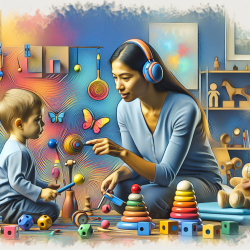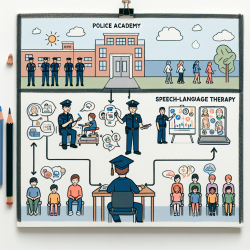In the field of speech-language pathology, data-driven decisions are critical for optimizing therapeutic outcomes. The recent study, "Multisensory cueing facilitates naming in aphasia," published in the Journal of NeuroEngineering and Rehabilitation, provides compelling evidence that multisensory cueing can significantly improve naming accuracy and communication effectiveness in individuals with chronic non-fluent aphasia. This blog will delve into the research findings and discuss how practitioners can integrate these strategies into their practice to enhance outcomes for children with aphasia.
Understanding Multisensory Cueing
Multisensory cueing involves using multiple sensory channels to facilitate word retrieval and production. The study investigated two novel cueing techniques:
- Silent Visuomotor Cues (SVC): These cues provided articulatory information through silent videos of lip movements.
- Semantic Auditory Cues (SAC): These cues involved sounds that were semantically relevant to the target words (e.g., a ringing sound for "telephone").
Key Findings
The study involved ten participants with chronic non-fluent aphasia who underwent a peer-to-peer language game using the Rehabilitation Gaming System for aphasia (RGSa). The results were promising:
- Significant improvement in naming accuracy for both cued and non-cued stimuli.
- Decreased Interaction Times (ITs), indicating enhanced communicative effectiveness.
- Greater benefits of SVC and SAC cues during early intervention sessions.
Practical Applications for Speech-Language Pathologists
For practitioners working with children, integrating multisensory cueing can be particularly beneficial. Here are some actionable steps:
- Incorporate Silent Visuomotor Cues: Use silent videos showing lip movements to help children visualize and mimic articulatory patterns.
- Utilize Semantic Auditory Cues: Introduce sounds related to target words to enhance semantic connections and facilitate word retrieval.
- Leverage Technology: Implement these cueing strategies in digital platforms or mobile apps to provide continuous and engaging practice.
Encouraging Further Research
While the study provides robust evidence for the efficacy of multisensory cueing, further research is essential to explore its applications in different contexts and populations. Practitioners are encouraged to contribute to this growing body of knowledge by documenting their observations and outcomes when using these techniques.
To read the original research paper, please follow this link: Multisensory cueing facilitates naming in aphasia.










